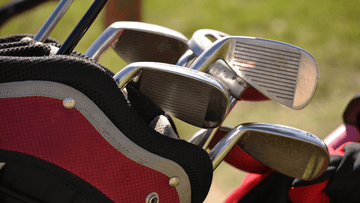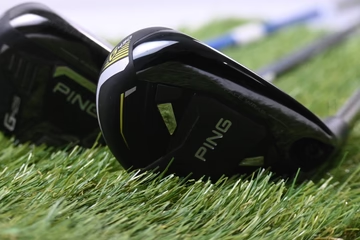Subscribe to our mailing list for insider news, product launches, and more.


The Complete Guide to Zero-Torque Putters
Putting is as much about consistency and feel as it is about technique. Over the past year or so, “zero-torque”, “no-torque” or “balanced torque” putters have emerged, promising to reduce face rotation through impact and deliver more reliable performance on the greens. In this comprehensive guide, we’ll unpack the technology behind zero-torque designs, explore their benefits and drawbacks and highlight the leading models.
What Is a Zero-Torque Putter?
Zero-torque putters represent a radical departure from traditional designs by neutralising the twist that occurs when the ball strikes the face. Unlike conventional putters where the shaft attaches above or behind the club’s centre of gravity (CG), allowing the toe to hang and the face to rotate, zero-torque models align the shaft axis directly through the CG. This alignment keeps the head square throughout the stroke, making it ideal for golfers who favour a straight-back, straight-through putting stroke.
Key Concept:
Centre of Gravity Alignment: By routing the hosel or shaft through the CG point, the putter head resists twisting, promoting a square face on impact.
Key Concept:
Centre of Gravity Alignment: By routing the hosel or shaft through the CG point, the putter head resists twisting, promoting a square face on impact.
How Zero-Torque Technology Works
At the heart of zero-torque engineering lies precise weight distribution and hosel placement. Here’s how the magic happens:
Central Hosel Design: The shaft enters the head at its CG, effectively eliminating rotational leverage. You’ll often see the toe resting slightly upward at address, an indication that the head’s balance point lies directly below the hosel.
Perimeter Weighting: High-density tungsten or steel weights are positioned heel and toe to boost the putter’s MOI (Moment of Inertia). This increased stability means mis-hits still track relatively square to the target.
Face-Angle Maintenance: Without torque forcing rotation, the face remains square through impact, yielding a more direct and predictable roll.
Central Hosel Design: The shaft enters the head at its CG, effectively eliminating rotational leverage. You’ll often see the toe resting slightly upward at address, an indication that the head’s balance point lies directly below the hosel.
Perimeter Weighting: High-density tungsten or steel weights are positioned heel and toe to boost the putter’s MOI (Moment of Inertia). This increased stability means mis-hits still track relatively square to the target.
Face-Angle Maintenance: Without torque forcing rotation, the face remains square through impact, yielding a more direct and predictable roll.
Benefits of Zero-Torque Putters
Zero-torque designs offer tangible advantages for golfers seeking greater consistency and confidence on the greens:
Improved Face Stability: Reduced twisting leads to fewer open or closed-face mishits, helping guards against errant starts.
Consistency on Short Putts: With better face control inside 10 ft, conversion rates climb transforming those near-misses into made putts.
Ideal for Straight Strokes: If your natural stroke lacks arc, a zero-torque head stays true to your intended line.
Enhanced Forgiveness: Even toe or heel strikes are easier to recover, thanks to high MOI.
Improved Face Stability: Reduced twisting leads to fewer open or closed-face mishits, helping guards against errant starts.
Consistency on Short Putts: With better face control inside 10 ft, conversion rates climb transforming those near-misses into made putts.
Ideal for Straight Strokes: If your natural stroke lacks arc, a zero-torque head stays true to your intended line.
Enhanced Forgiveness: Even toe or heel strikes are easier to recover, thanks to high MOI.
Drawbacks and Considerations
No club is perfect. Before you switch, consider these factors:
Aesthetic Adjustment: The raised toe address can look unconventional, which some golfers find initially off-putting.
Arc-Compatible: Players with a pronounced arc rely on face rotation; zero-torque models may resist that natural release.
Learning Curve: Transitioning from toe-hang to square-bias requires practice to develop trust and familiarity.
Aesthetic Adjustment: The raised toe address can look unconventional, which some golfers find initially off-putting.
Arc-Compatible: Players with a pronounced arc rely on face rotation; zero-torque models may resist that natural release.
Learning Curve: Transitioning from toe-hang to square-bias requires practice to develop trust and familiarity.
Leading Zero-Torque Brands/Models
L.A.B. Golf

L.A.B. Golf
Pioneers of the central-shaft concept, featuring high MOI and proven tour success.
PXG ALLAN Putter

PXG ALLAN Putter
S-shaped hosel and hollow-body design for ultimate stability and a pure feel.
Evnroll ER5 Zero

Evnroll ER5 Zero
Reverse-offset hosel and micro-grooved face for consistent roll and feedback.
Bettinardi Antidote SB1 & SB2

Bettinardi Antidote SB1 & SB2
Classic milled heads with precision weight placement and multiple head shapes.
TaylorMade Spider ZT

TaylorMade Spider ZT
Newer model from one of the biggest names in golf.
Odyssey Square 2 Square Jailbird Putter

Odyssey Square 2 Square Jailbird Putter
The look of the Odyssey Square 2 Square is quickly becoming an iconic one, allowing players to achieve easy, accurate alignment and to excel with those shorter putts.
Putting Performance Data
While strokes-gained numbers vary by tour event, zero-torque putters consistently produce eye-opening stats:
Strokes Gained: Putting: Users often gain +1.0 to +2.0 strokes per round on the greens.
Make Percentage: Dramatic improvements from 5–10 ft, jumping into the 70% range from mid-60s.
Face Rotation Reduction: Independent tests show 50–75% less torque versus conventional heads.
Strokes Gained: Putting: Users often gain +1.0 to +2.0 strokes per round on the greens.
Make Percentage: Dramatic improvements from 5–10 ft, jumping into the 70% range from mid-60s.
Face Rotation Reduction: Independent tests show 50–75% less torque versus conventional heads.
Who Should Use a Zero-Torque Putter?
Best Suited For:
Golfers with a straight-back, straight-through stroke.
Players seeking maximum face stability and forgiveness.
Competitors who want to boost short putt confidence.
Less Suitable For:
Those with an arced putting motion relying on toe-hang.
Golfers resistant to unconventional head shapes at address.
Golfers with a straight-back, straight-through stroke.
Players seeking maximum face stability and forgiveness.
Competitors who want to boost short putt confidence.
Less Suitable For:
Those with an arced putting motion relying on toe-hang.
Golfers resistant to unconventional head shapes at address.
Final Thoughts
Zero-torque putters are a breakthrough for players craving face-angle consistency and short-game confidence. By neutralising twisting through impact, these designs offer a level of control that can transform your scoring. If you struggle with open or closed faces or simply want a more dependable roll, give zero-torque a try.
Explore our selection of pre-owned putters at GolfClubs4Cash and discover the next step in putting evolution or read our Putters blog or all our blogs here to get a better idea on your next buys.
Explore our selection of pre-owned putters at GolfClubs4Cash and discover the next step in putting evolution or read our Putters blog or all our blogs here to get a better idea on your next buys.
More blogs and guides
The Golfclubs4cash guide to Zero-Torque Putters
Discover the benefits of zero-torque putters with Golfclubs4cash. Learn how they improve face stability, consistency and confidence on the greens in our...
Read more
Drivers Buyers Guide
Here you'll find our comprehensive guide on what drivers is best for your golf game
Read more
The complete guide to buying a second-hand golf iron
Whether you’re brand new to golf and are looking to invest in your first set of used golf clubs, or you’re a...
Read more









